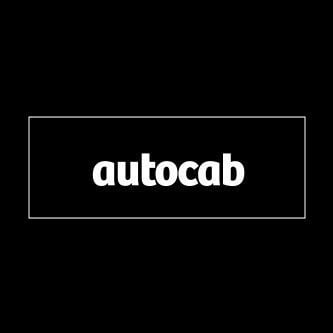Description

Moovs

TaxiCaller
Comprehensive Overview: Moovs vs TaxiCaller
Here's a comprehensive overview of Moovs and TaxiCaller, focusing on their primary functions, target markets, market presence, and key differentiators:
Moovs:
a) Primary Functions and Target Markets:
- Primary Functions: Moovs is a cloud-based transportation management system designed for both individual drivers and fleet operators. It offers real-time vehicle tracking, booking and dispatch features, customer management, payment processing, and analytics tools. Moovs also provides a mobile app for drivers and passengers, enabling efficient ride-hailing services.
- Target Markets: Moovs targets a wide range of users, from small to medium-sized fleet operators to large enterprise vehicle fleets. It primarily focuses on taxi companies, limousine services, shuttle operations, and corporate transportation solutions.
b) Market Share and User Base:
- Market Share: Moovs is a niche player in the transportation management software sector, catering especially to businesses looking for comprehensive fleet management solutions. It may have a smaller market share compared to larger, more established global taxi dispatch systems.
- User Base: The user base typically includes small and mid-sized operators seeking customizable solutions with strong analytics capabilities. Precise numbers on user base are not broadly published.
TaxiCaller:
a) Primary Functions and Target Markets:
- Primary Functions: TaxiCaller is a dispatch and fleet management platform that digitizes and streamlines booking and dispatch processes for transportation companies. Key features include booking apps for passengers, dispatch tools for operators, driver apps, GPS tracking, and integration with third-party services like payment gateways and accounting software.
- Target Markets: TaxiCaller mainly targets taxi companies, ride-sharing services, limo services, and other passenger transport services worldwide, ranging from small regional operators to larger scale enterprises.
b) Market Share and User Base:
- Market Share: TaxiCaller holds a significant position in the market, with a wider reach given its well-established presence in the taxi dispatch software industry. It is considered a competitive player alongside other similar service providers.
- User Base: TaxiCaller serves a diverse set of clients globally with thousands of transportation companies utilizing its platform for operations. The wide range of functionalities appeals to a broad spectrum of operators, ensuring a growing user base.
c) Key Differentiating Factors:
-
Customization and Flexibility: Moovs may offer more customizable solutions tailored to specific client needs, which could be appealing to operators with unique business models or specific service requirements.
-
Market Position and Reach: TaxiCaller is more established and recognized globally, potentially providing a more robust platform with proven scalability and reliability for larger clients.
-
Technology and Innovation: Each platform may differentiate itself through technology integration and innovation – for example, advanced route optimization, AI-driven analytics, or seamless integration capabilities with existing systems.
-
User Experience: Depending on the target client, the user interface and ease-of-use might play a significant role in differentiation, with each having its own approach based on end-user feedback and industry standards.
In summary, while both Moovs and TaxiCaller offer valuable transportation management solutions, they cater to slightly different segments and might appeal to clients based on their specific operational needs, the scale of operation, and desired level of customization.
Contact Info

Year founded :
1991
+31 71 519 1975
Not Available
Netherlands
http://www.linkedin.com/company/moovs

Year founded :
2011
+46 8 559 219 50
Not Available
Sweden
http://www.linkedin.com/company/taxicaller
Feature Similarity Breakdown: Moovs, TaxiCaller
When comparing Moovs and TaxiCaller, both of which are platforms that provide solutions for taxi and transportation services, a feature breakdown would typically include the following:
a) Core Features in Common
- Booking System: Both platforms offer a comprehensive booking system that allows users to book rides through a mobile app or web interface.
- Driver App: Each service provides a dedicated app for drivers that includes functionality for accepting rides, navigation, and communication with passengers.
- Tracking and Navigation: Real-time GPS tracking is available, which helps users and drivers to track rides and plan efficient routes.
- Payment Processing: Integration with multiple payment gateways to support cashless transactions directly through the app.
- Admin Dashboard: Both platforms offer a management dashboard for operators that provides insight into operations, fleet management, and analytics.
- Customer Support Tools: Features such as chat support, help centers, or direct contact options for riders and drivers.
b) Comparison of User Interfaces
-
Moovs: Generally, platforms like Moovs focus on a modern, minimalistic interface that emphasizes ease of use. The user journey might be streamlined with intuitive navigation, making it easy for users to book and manage their rides with minimal taps.
-
TaxiCaller: Known for a more utilitarian interface that might be packed with features but could appear cluttered or less intuitive to new users. TaxiCaller typically caters more to the needs of larger fleet operations, so the interface might include more detailed settings and comprehensive options for customization.
c) Unique Features Setting One Apart
-
Moovs:
- Integration with Other Services: Moovs may offer seamless integration with other mobility services, such as bike rentals or public transportation, aiming for a holistic approach to urban mobility.
- Enhanced User Experience: Focus on user-centric design innovations that could stand out, such as personalized recommendations or advanced predictive analytics for ride estimations.
-
TaxiCaller:
- Extensive Customization: TaxiCaller often provides highly customizable software that allows fleet operators to tailor almost every aspect of the service to suit specific business needs.
- Wide-Ranging Compatibility: TaxiCaller is typically compatible with a wide range of hardware and third-party integrations, making it flexible for different operational setups.
- Advanced Reporting and Analytics: TaxiCaller could offer more robust reporting tools that cater to larger operators who need detailed insights into performance metrics.
Overall, while both platforms share many core features due to their focus on transportation services, they distinguish themselves in terms of customization, user interface, and specific unique features designed to cater to different market segments or operational needs.
Features

Not Available

Not Available
Best Fit Use Cases: Moovs, TaxiCaller
Moovs and TaxiCaller are both software solutions designed to support transportation and mobility businesses, but they cater to slightly different needs and scenarios. Here's a breakdown of their best-fit use cases:
a) Moovs
Best Fit for:
-
Corporate Mobility Services: Moovs is ideal for businesses focusing on providing corporate mobility solutions. It can cater to companies that require efficient and flexible employee transportation, including ride-sharing, fleet management, and parking solutions.
-
Shared Mobility Operators: This platform is well-suited for businesses involved in shared mobility services like bike-sharing, car-sharing, or scooter-sharing platforms. It provides the necessary infrastructure to manage and optimize shared assets.
-
Large Enterprises with Diverse Mobility Needs: Large organizations looking to integrate different transportation modes into a single platform can benefit from Moovs. It facilitates unified management of various mobility options, from taxis to public transportation.
-
Customized Employee Transportation Solutions: Businesses needing tailored solutions for employee commute with features like route optimization and ride-sharing could find Moovs useful.
b) TaxiCaller
Best Fit for:
-
Taxi and Cab Operators: TaxiCaller is primarily designed for traditional taxi and cab companies. It offers essential dispatching and management tools that help streamline operations and improve service delivery.
-
Transportation Network Companies (TNCs): Emerging TNCs or ride-hailing startups, similar to Uber or Lyft, can leverage TaxiCaller for scalable and efficient dispatch systems.
-
Non-Emergency Medical Transportation (NEMT): Providers specializing in medical transportation can utilize TaxiCaller's robust scheduling and dispatch capabilities, ensuring reliable and timely service.
-
Small to Medium-sized Transportation Businesses: TaxiCaller is suitable for small to mid-sized operators needing cost-effective yet powerful solutions to improve efficiency without the need for heavy customization.
d) Industry Verticals and Company Sizes
Moovs:
- Industries: Primarily targets corporate sectors, mobility service providers, logistics companies, and urban planners. It is highly adaptive for any industry looking to implement efficient mobility solutions.
- Company Size: Ideal for medium to large enterprises with complex and varied mobility needs, and that require a high degree of integration and customization.
TaxiCaller:
- Industries: Focuses on traditional taxi services, ride-hailing startups, medical transportation, and logistics services that rely heavily on dispatch and fleet management.
- Company Size: Caters well to small and medium-sized businesses, though it can also support larger operations looking for affordable and straightforward solutions.
Overall, the choice between Moovs and TaxiCaller depends on the specific needs of the business or project, the scale of operations, and the degree of customization required. Moovs offers broader integration capabilities for diverse mobility needs, while TaxiCaller specializes in dispatch-centric models suited for traditional and emerging taxi services.
Pricing

Pricing Not Available

Pricing Not Available
Metrics History
Metrics History
Comparing teamSize across companies
Conclusion & Final Verdict: Moovs vs TaxiCaller
To provide a conclusion and final verdict for Moovs and TaxiCaller, we'll evaluate different aspects of these transportation management platforms. Both Moovs and TaxiCaller are designed to streamline operations for taxi and transportation companies, offering functionalities like booking, dispatching, and fleet management. Here's a comprehensive analysis:
a) Overall Value:
-
Moovs: Often praised for its user-friendly interface and integration capabilities with other systems, Moovs is a strong contender for companies seeking a seamless user experience and lower learning curve. It tends to focus on smaller to mid-sized operations and is appreciated for its customization options and reasonable pricing tailored to smaller businesses.
-
TaxiCaller: Known for its robust feature set, TaxiCaller excels in providing extensive functionalities suitable for larger operations. Its strengths include comprehensive dispatching tools, mapping solutions, and a wide range of integrations, making it ideal for companies that require more advanced capabilities.
Verdict: The best overall value depends on company size and needs. For small to medium enterprises, particularly those with a focus on ease of use and straightforward integration, Moovs offers better value. For larger operations looking for a more extensive feature set, TaxiCaller is likely the more valuable choice.
b) Pros and Cons:
-
Moovs:
- Pros: User-friendly interface, cost-effective for smaller operations, customizable, easy integration.
- Cons: Limited features for larger companies, less comprehensive mapping and dispatching tools compared to TaxiCaller.
-
TaxiCaller:
- Pros: Advanced feature set, excellent dispatching and mapping capabilities, suitable for large fleets, versatile integration options.
- Cons: Steeper learning curve, higher cost which may not be justified for smaller entities.
c) Recommendations:
-
Assess Company Size and Needs: Smaller companies or startups should lean toward Moovs due to its simplicity and cost-effectiveness. Larger companies, or those experiencing rapid growth, may benefit more from TaxiCaller’s robust and extensive feature set.
-
Evaluate Technological Expertise: Companies with limited technological expertise may prefer Moovs for its ease of use. Conversely, those with dedicated IT staff can leverage the advanced functionalities of TaxiCaller.
-
Consider Future Scalability: If scalability is a significant concern, TaxiCaller might offer better long-term options although it requires more upfront investment in terms of both time and resources.
-
Trial Each Platform: Both products often offer trial versions or demos. Prospective users should take advantage of these to test which aligns more closely with their specific operational needs.
In conclusion, choosing between Moovs and TaxiCaller should be based on the specific requirements of the business – with a clear understanding of current needs, resources, and future scalability plans.
Add to compare
Add similar companies



